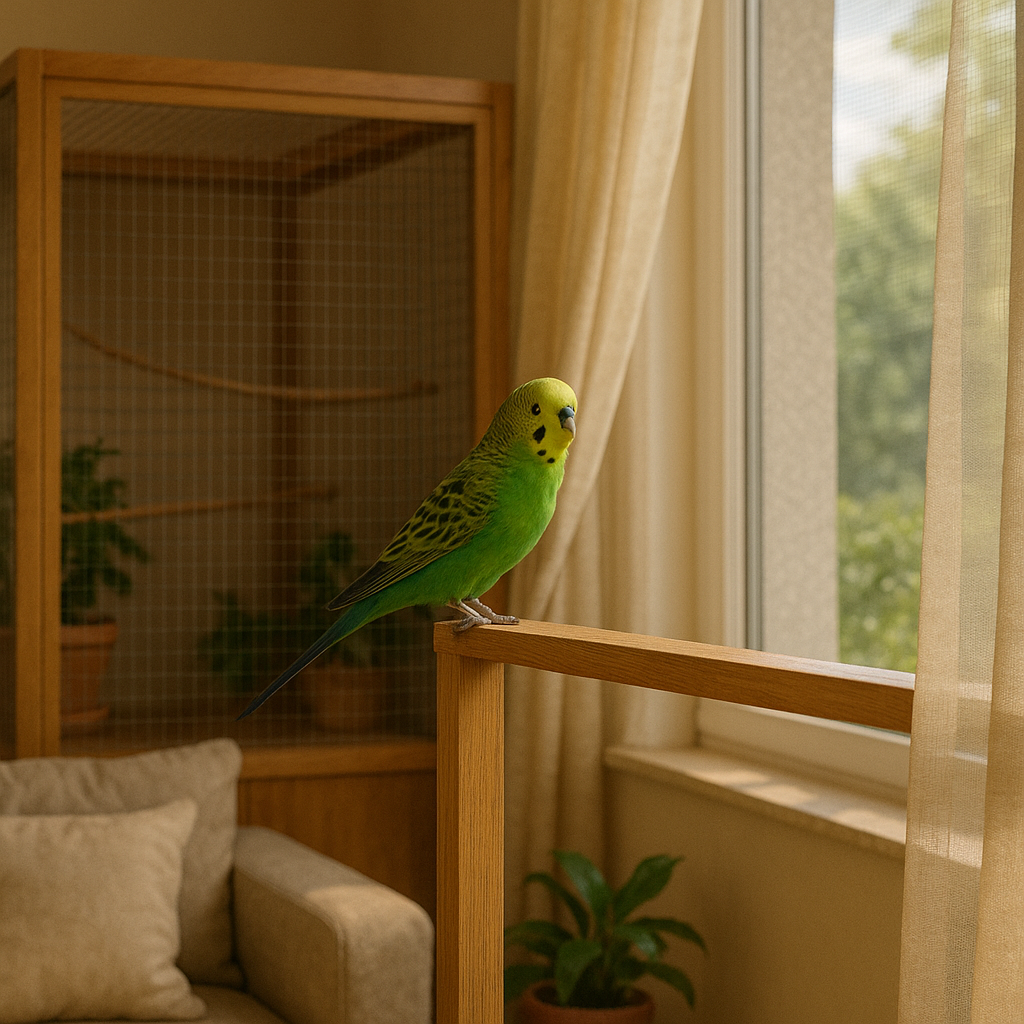How to Prevent Losing Your Bird: A Complete Guide to Ensuring Their Safety
By Lost'Him Team • February 21, 2025

Birds, whether parakeets, canaries, parrots, lovebirds, cockatiels, or budgies, are active, curious, and sometimes unpredictable. An unlatched cage door, an open window, or a moment of inattention can lead to an escape.
The risks are numerous: disorientation, fatigue, predators, traffic, and harsh weather conditions. Fortunately, with the right precautions, the risk of escape can be greatly minimized. Here is a complete guide to preventing your bird from getting lost and knowing how to react if they do.
1. Secure the Indoor Environment
👉 Adopt daily safety habits
- Keep doors, windows, and vents closed before letting your bird out.
- Be mindful of skylights and poorly secured mosquito screens: Some birds can chew through them and escape.
- Install strong mosquito nets: Choose durable models that won’t tear easily.
- Check small gaps and openings: Small birds can squeeze through incredibly tight spaces.
- Remove dangerous objects: The kitchen, bathroom, and rooms with ceiling fans should be made safe.
💡 A secure environment is the first step in preventing escapes.
2. Choose a Secure and Well-Maintained Cage
👉 Key points to ensure safety
- Opt for strong bars: Avoid cages with thin bars that birds can bend.
- Use secure locks: Some birds learn to open simple latches.
- Regularly inspect fixtures: Check the cage structure weekly.
- Secure all access doors: Food doors and cleaning openings are common escape points.
💡 A well-maintained cage with strong locks ensures your bird stays safe.
3. Supervise Free-Flight Time
👉 Adopt vigilance habits
- Only let birds out in a closed room: Keep doors and windows shut, and cover mirrors and glass doors.
- Secure ceiling fans and light fixtures: Ceiling fans pose a serious risk to flying birds.
- Never leave them unattended: They could get stuck or find an escape route.
- Keep them away from the kitchen: Hot cookware and toxic fumes can be fatal.
💡 Choosing a safe room and monitoring flight time significantly reduces risks.
4. Train Your Bird to Respond to Recall
👉 Build trust and recall skills
- Teach your bird to come when called: Use a keyword like “Come” or “Return” and reward them with treats.
- Keep their cage visible during flight time: A bird that escapes is more likely to return if they can see their home.
- Gradually expose them to outdoor noises: This reduces panic in case of sudden loud sounds.
💡 A bird trained for recall is far more likely to return if they get loose.
5. Secure Outdoor Time
👉 Essential precautions for outdoor exposure
- Use a specialized harness: Some harnesses are designed for parrots and parakeets.
- Choose a secure outdoor area: A closed aviary is safer than allowing free flying.
- Check the weather: Wind, sudden noises, and predators can frighten birds.
- Limit outdoor time: A bird out for too long may be tempted to fly further.
💡 A harness is a great solution but requires careful training.
6. Identify Your Bird for Easier Recovery
👉 Implement identification methods
- Leg bands: Most captive-bred birds have identification bands with a unique number.
- Microchipping: Possible for larger parrots, allowing identification by a veterinarian.
💡 Identification is crucial for recovering a lost bird.
7. Be Extra Cautious During Moulting and Breeding Seasons
👉 Watch for behavioral changes in these sensitive periods
- During moulting: Birds may become more nervous and seek isolation.
- During the breeding season: Their instinct to reproduce may drive them to escape.
- Reduce free-flight time: Limit their unsupervised time during these periods.
💡 Adjusting your bird’s environment based on their natural cycles can help prevent escapes.
Conclusion: Prevention is the Best Protection
- ✅ Secure the indoor environment: Keep windows, doors, and vents closed.
- ✅ Choose a high-quality cage: Strong bars with secure locks.
- ✅ Supervise free-flight time: Never leave birds unattended.
- ✅ Train recall and familiarization: So they return when called.
- ✅ Identify your bird: Leg bands, microchip, or GPS.
- ✅ Anticipate stress periods: Moulting, breeding, and environmental changes.
💡 With vigilance and precautions, the risk of loss is significantly reduced. 🦜💜
 EN
EN  FR
FR  PT
PT  ES
ES  IT
IT  DE
DE